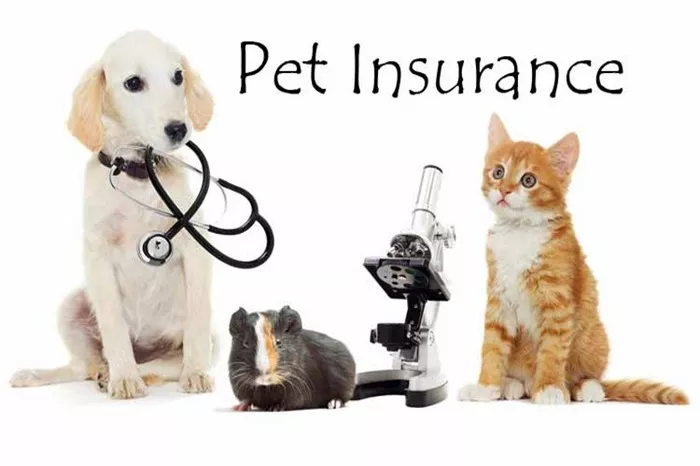Understanding pet insurance can be a bit complex, especially when it comes to the terms and conditions that define your coverage. One of the most crucial concepts in pet insurance is the deductible. This article aims to provide a comprehensive overview of what a deductible is, how it works in the context of pet insurance, and its impact on your overall coverage and costs.
What Is a Deductible?
A deductible is the amount of money that you, the pet owner, must pay out-of-pocket before your pet insurance policy starts covering eligible expenses. It acts as a threshold that needs to be met before the insurance company begins to contribute to the cost of veterinary care. Deductibles can vary widely depending on the insurance provider and the specific policy you choose.
Types of Deductibles in Pet Insurance
Pet insurance policies often come with different types of deductibles. Understanding these can help you choose the best policy for your needs and budget.
Annual Deductibles
An annual deductible is the most common type of deductible in pet insurance. It is the total amount you must pay each policy year before your insurance coverage kicks in. Once you meet the annual deductible, your insurance company will cover a portion of your pet’s medical expenses according to the terms of your policy. If your pet requires multiple treatments or visits within the same policy year, you will not need to pay the deductible again until the next policy year begins.
Per-Incident Deductibles
Some pet insurance policies feature a per-incident deductible. This means you have to pay the deductible amount for each new condition or incident. For instance, if your pet is diagnosed with an ear infection and then later develops arthritis, you will need to pay the deductible for each separate condition. This type of deductible can be more challenging to manage if your pet has multiple health issues throughout the year.
Lifetime Deductibles
Lifetime deductibles are less common but worth mentioning. With a lifetime deductible, you only need to meet the deductible amount once over the lifetime of your pet. This means that once the deductible is met, the insurance company will cover expenses for that condition for the rest of your pet’s life. This can be beneficial for pets with chronic conditions or long-term health issues.
How Deductibles Affect Your Premiums
Deductibles are one of the factors that influence your pet insurance premiums. Typically, policies with lower deductibles have higher premiums, while those with higher deductibles have lower premiums. Here’s how different deductible levels can impact your costs:
Lower Deductibles
Policies with lower deductibles mean that you’ll pay less out-of-pocket before your insurance coverage starts. This can be beneficial if you anticipate frequent veterinary visits or high medical expenses for your pet. However, the trade-off is that your monthly premiums will likely be higher.
Higher Deductibles
Opting for a higher deductible will generally result in lower monthly premiums. This can make pet insurance more affordable on a monthly basis. However, it’s important to ensure that you can comfortably cover the higher deductible amount in the event of a major health issue or emergency.
See Also: What Type of Cat Insurance Should I Get?
Choosing the Right Deductible
When choosing a deductible for your pet insurance policy, consider your financial situation and your pet’s health. Here are some factors to take into account:
Financial Flexibility
Evaluate how much you can afford to pay out-of-pocket in case of an emergency. If you have a flexible budget and can handle higher costs in the short term, a higher deductible might be a good choice to lower your monthly premiums. Conversely, if you prefer predictability and lower monthly expenses, a lower deductible might be better.
Pet’s Health and Risk Factors
Consider your pet’s age, breed, and overall health. Younger pets or those with no known health issues might benefit from a higher deductible with lower premiums. On the other hand, older pets or those with chronic conditions might benefit from a lower deductible, as they are more likely to require frequent veterinary care.
Policy Terms
Review the terms of the insurance policy carefully. Some policies might offer additional benefits, such as coverage for wellness exams or preventative care, which can impact your overall costs. Ensure that the deductible aligns with the coverage provided and that you understand all the policy details.
Impact of Deductibles on Claims
Understanding how deductibles work in practice can help you manage your pet’s medical expenses more effectively. Here’s a look at how deductibles impact the claims process:
Meeting the Deductible
When you file a claim, you’ll need to pay the deductible amount before the insurance company starts reimbursing you for covered expenses. For example, if your policy has a $500 annual deductible and your pet undergoes a $1,000 surgery, you will pay the first $500 out-of-pocket. After meeting the deductible, the insurance company will reimburse you for the remaining $500, according to the terms of your policy.
Reimbursement Process
Once you meet the deductible, the insurance company will cover a portion of the eligible expenses based on your policy’s reimbursement rate. Policies typically reimburse between 70% to 90% of covered expenses after the deductible is met. The exact percentage will vary depending on your policy.
Limitations and Exclusions
Be aware that some policies may have limitations or exclusions related to deductibles. For example, certain types of treatments or conditions might not be covered, or there might be annual limits on coverage. It’s essential to understand these limitations and ensure that your policy meets your needs.
Conclusion
A deductible is a critical component of pet insurance that determines how much you pay out-of-pocket before your insurance coverage begins. By understanding the different types of deductibles and their impact on your premiums and claims, you can make an informed decision when choosing a pet insurance policy. Consider your financial situation, your pet’s health, and the specifics of the policy to select the deductible that best aligns with your needs. Properly managing your deductible can help you provide the best care for your pet while balancing your budget effectively.






















